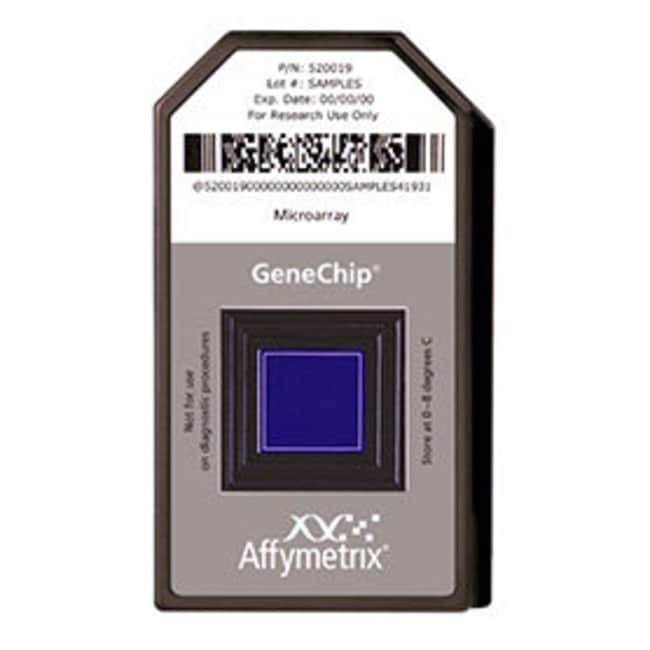Search Thermo Fisher Scientific
- Contáctenos
- Orden Rápida
-
¿No tiene una cuenta? Crear una cuenta
Search Thermo Fisher Scientific

| Número de catálogo | N.º de muestras |
|---|---|
| 902445 | 10 Samples |
| 902446 | 30 Samples |


Probes for snoRNA, scaRNA, and hairpins are selected to maximize probe response to target concentration in the sample while minimizing cross-hybridization to other potential targets in the sample. In order to minimize cross-hybridization, potential targets are inferred from the landscape of known sequences from the input dataset and used in a filtering process called pruning which penalizes probe candidates that may cross-hybridize to unwanted targets. As the landscape of known sequences improves, we can improve our pruning set to avoid probe candidates previously thought to be unique. An improved pruning set will reduce the chances a probe will cross-hybridize to unwanted target, improving the probe set representation of the intended target. As a result of the improved probe selection, few probe sets are required to represent the same number of sequences.
Find additional tips, troubleshooting help, and resources within our Microarray Analysis Support Center.
Probes on the array detect sense target.
Find additional tips, troubleshooting help, and resources within our Microarray Analysis Support Center.
At least 5 miRs or SnoRNAs should be used to normalize:
RU44, RU48, and/or U6 microRNAs that are not changed among your samples, and are at least 5X over background, according to your microarrays. These miRs might include miR 15,16, 17, or let 7a, let 7b, let7c
All 5 (or more) of these RNAs should not show any change among the samples. Average some or all of these to get the normalization factor, and apply to your qRT-PCR data.
Find additional tips, troubleshooting help, and resources within our Microarray Analysis Support Center.
qPCR is not yet the gold standard for miRNA validation. Unlike mRNA validation, in which the amplicon is already present in the sample, miRNA qPCR requires the amplicon to be synthesized by combining the sample with either a specially designed hairpin molecule, adding a 3' polyA tail, or some other manipulation of the microRNA sample. The amplicon-building process will be different from sample to sample and will result in variability in the PCR results. However, it is still very important to validate the array results with another method, like PCR. The trends in up and down regulation should match in direction, even if they do not match in magnitude.
Find additional tips, troubleshooting help, and resources within our Microarray Analysis Support Center.
F Sato. Intra-Platform Repeatability and Inter-Platform Comparibility of microRNA microarray technology. PLoS ONE May 2009, volume 4, issue 5, e5540.
D Sarkar. Quality Assessment and data analysis for microRNA expression arrays. Nucleic Acids Research 2009, vol. 37, no. 2, e17 (doi: 10.1093/ner/gkn932).
Find additional tips, troubleshooting help, and resources within our Microarray Analysis Support Center.
Compartir número de catálogo, nombre o enlace.